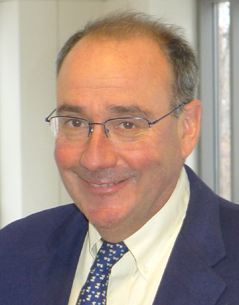
Home | | Why BMI? | Why Me? | Programs | Committees | Webinars | Classes | Founding | Login
Summer 2012 | Sponsors 2012 | BMI 811 | BMI 821 | BMI 871 | Summer 2013 | Registration
Jim Olds: Keynote Talk
 |
The Role of Advanced Studies at the Brain-Machine InterfaceJames L. Olds July 14-15, 2012 |
|---|
Abstract
Advanced Studies have a long and distinguished history in science. From the seminal Institute for Advanced Study at Princeton, to its many offspring, spread across the United State, high-risk, high-payoff research has offered the opportunity for paradigmatic change. Nowhere is such change more urgent than in the neuroscience-related disciplines where terabytes of data are created and stored daily, all without a global theory such as we have with the DNA dogma and physics' Standard Model. The global implications of mastering the brain-machine interface range from public health to advanced manufacturing. The field of neuroengineering, still nascent but already thriving, is central to advances in these areas, but remains at risk because of the many lacunae in our knowledge about the human brain. While we have exhaustively catalogued the most complex "machine" we know of in the universe, its neural code, writ large, remains obscure. Only by the doing science made famous by Thomas Kuhn can we hope to give neuroscience its own general theory and neuroengineering the keys to the brain. It is a good bet that a good part of that work will be done at America's advanced studies institutes.
Short bio
Jim Olds received his bachelors of arts degree in Chemistry from Amherst College in 1978. After graduating, Olds interned on Capitol Hill for the United States House of Representatives researching chemical aspects of mid-future electrical energy alternatives.
Olds entered the Neuroscience Ph.D. program at the University of Michigan in 1983, and received his Ph.D. (1987) in neurosciences from that institution. His thesis advisor was Bernard W. Agranoff, the Director of the Neuroscience Laboratory and the Mental Health Research Institute at the University of Michigan Medical Center.
Following the award of his doctorate, Dr. Olds continued his training as a post-doctoral fellow in the Laboratory of Molecular and Cellular Neurobiology (LMCN), NINDS at the National Institutes of Health. Commencing in 1989, Olds published a series of papers which, for the first time, imaged learning-specific changes in the distribution of the activated form of the enzyme protein kinase C in the brains of both invertebrates and mammals. For this work and follow-up studies, Dr. Olds received the NIH award of merit in 1993. In 1994 Dr. Olds was appointed as a senior staff fellow in the newly formed Laboratory of Adaptive Systems (LAS), NINDS.
Dr. Olds also has had a close affiliation with the Marine Biological Laboratory in Woods Hole Massachusetts. In 1991 Dr. Olds was elected a member of the MBL Corporation. In 1994, Dr. Olds led a team of MBL summer investigators which, for the first time, imaged the activation of protein kinase C in living sea urchin eggs following fertilization using laser-scanning confocal microscopy. In 1995 Dr. Olds moved to the private sector to become the Executive Director of the American Association of Anatomists, a professional scientific society representing some 2,500 biomedical scientists.